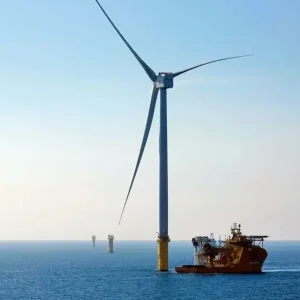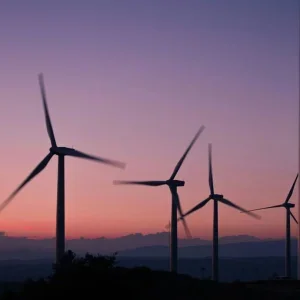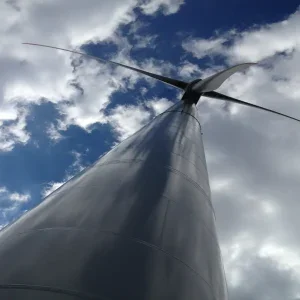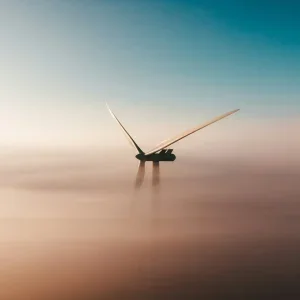The Canadian wind energy sector is entering a new era, in which innovation in operations and maintenance will keep the industry competitive with other sources of power. Historically, the North American nation has adopted wind industry innovations from Europe, but home-grown technology – often spurred by extreme environmental conditions and a cold climate – is finding its way to markets at home and around the world.
Canada is ninth in the world in installed wind energy capacity, with a fleet of more than 6,400 turbines at 295 wind farms, representing about 12,000MW of total capacity.
“More companies have more dollars tied up in the operation of existing wind farms than in the development of new projects,” says Canadian Wind Energy Association (CanWEA) president Robert Hornung.
“As a result, the pressure to ensure these facilities are operating as efficiently, as effectively and as safely as possible continues to grow.”
Hornung notes that the opportunities to develop new wind energy in Canada have slowed somewhat in recent years. Electricity surpluses and flat demand growth mean there isn’t as much need to procure new supply in many Canadian provinces. There will, however, be some important opportunities for new developments in the coming years, particularly in the western provinces of Alberta and Saskatchewan, where new wind projects will help lower the carbon intensity of the grid and phase out coalfired generation. However, “in much of the rest of Canada, the electricity supply mix is already largely non-greenhouse gas emitting,” he says.
In this environment, wind energy’s continuous cost declines have been, and will continue to be, critical to opening up more opportunities for the wind energy industry throughout Canada – whether it is to support the phasing out of coalfired generation, fill an emerging power supply gap as nuclear power plants are refurbished in Ontario, or help the north-east US reduce its reliance on fossil-fuel-powered generation through clean electricity imports from Quebec and Atlantic Canada.
Natural mimic
CanWEA has increased its focus on operations and maintenance because of the growing overall importance of operational efficiency as the fleet grows and turbines age. At CanWEA’s recent operations and maintenance (O&M) summit in Toronto, several companies displayed innovations that will help improve the cost efficiency of wind turbines operating in Canada.
Toronto-based BiomeRenewables has developed what it calls a Power Cone, a specially designed hub cover that mimics a maple tree seed pod. The technology grew out of the company’s exploration of biomimicry – specifically, an examination of the extraordinarily aerodynamically efficient pods that enable maple seeds to fall extremely slowly from trees.
By mimicking the pod’s shape on a hub cover, the pressure distribution across the rotor is evened out with the intent of increasing energy capture, while also reducing loading on the turbine components.
Computational fluid dynamics analysis shows significant results can be expected from the upcoming full-scale test, which is scheduled for this summer.
Most Canadian wind farms have to function for part of the year in subfreezing conditions, so Borealis Wind, of Kitchener, Ontario, has designed a lowmaintenance wind-turbine de-icing system that can be installed as a retrofit.
Icing of wind turbine blades continues to be a challenge for Canadian operators working in certain regions of the country. While de-icing and anti-icing technology has been available for some time, the effectiveness and the financial feasibility of retrofitting it to turbines has not always been worthwhile. Borealis Wind’s hot-air heating system, however, adds ducting to carry air to the blade tip, with a natural return of the air along the leading edge of the blade. The simple and effective design, coupled with the low cost of application, has grabbed the attention of an industry that is seeking to address this source of substantial production losses.
Borealis Wind’s founder, Daniella Roeper, said Canada’s openness to innovation, and the wind industry’s willingness to invest in technology, along with government support, makes the country an attractive place for entrepreneurs to make their mark.
Other Canadian innovations earned awards at the summit. Quebec’s Cartier Énergie Éolienne received a health and safety excellence award for its customdesigned safety devices. These included a retrofitted positioning cable system on top of the nacelle, specifically engineered to allow technicians to tie off in such a way as to prevent falls.
The company also has advanced firstaid training, including winter rescues, and systems for the identification of mental health issues, training for off-road driving and forest fire intervention.
Ontario-based engineering contractor Liftwerx won an outstanding achievement award for its lifting devices for the Canadian market.
The company has adapted the Liftra crane technology, and added tools and applications compatible with the country’s expansive geography. Due to the large distances spanned by Canada’s wind turbine fleet, a lightweight and compact crane has prove to be very valuable to operators. The range of cranes and custom tools now used by Liftwerx provides options for facilities with road, wind, cost and other restrictions, so that they can conduct repairs that otherwise would have required longer down time or higher expense. The crane is built uptower using the existing turbine structure to support repairs or even removal of gearboxes and rotors.
Beyond Canada
Innovations from outside Canada that will improve operations and maintenance at Canadian wind farms were also on display. SkySpecs, of Michigan, US, expanded on the concept of drone-based visual inspections with autonomous robots. It uses various techniques to enable a semiautonomous drone to produce a full turbine inspection report in less than 15 minutes with no preprogramming or intervention from the pilot. The data is automatically assessed by another system, and is made available to the owner within hours.
Because of the repeatability of these inspections, forecasting of blade damage accumulation is possible, providing owners with insight into the future condition of their fleet and empowering better decision-making. While individual innovations will help make Canada’s wind operations more efficient and cost-effective, there are other broader issues that must be tackled if wind energy is to become a more prominent part of the power mix.
One key subject is whether wind farms can provide the ancillary services that electricity system operators need.
These ancillary services – such as ramping, and frequency and voltage contro − have traditionally come from conventional hydro or gas plants, but, increasingly, wind farms can tackle the job.
Workforce issues are also crucial. Skilled wind turbine technicians are in demand as wind assets continue to increase. Labour expenses are also an important variable for which there are opportunities for streamlining costs. Through collaboration on a basic set of abilities that wind turbine technicians should have, opportunities may exist to keep work quality high while saving costs on individualised training.
Overall, the competition to provide the energy services that electricity delivers is becoming more intense, and, in response, wind energy providers are streamlining their operations to reduce costs. The definition of competitiveness is changing, however.
With energy efficiency and structural shifts in the economy putting downward pressure on electricity demand in many jurisdictions, increased electrification to address climate change will eventually open up new opportunities for nonemitting generation over the longer term.
However, the fact that 80% of Canada’s electricity is already produced with no greenhouse gas emissions limits opportunities for growth of wind energy through the decarbonisation of the grid.
– Phil McKay
Increasing competition
On the supply side, growth in distributed generation and new technology is increasing the efficiency with which existing and new supply is used, and that, in turn, is increasing competition among the generation sources.
For wind to compete with other sources of energy, the Canadian industry needs to go beyond increasing its cost-competitiveness – it must also start providing a broader range of products and services to support the grid.
Electricity system operators are not only concerned about the cost of electricity per kilowatt hour and environmental performance – two things for which wind energy has an advantage – they are also concerned about system costs and reliability. As a result, the operations and maintenance technology that succeeds will be that which contributes most to these objectives.






